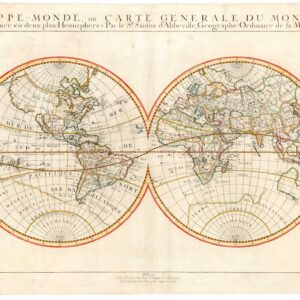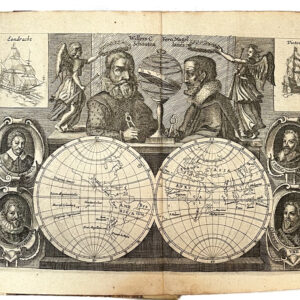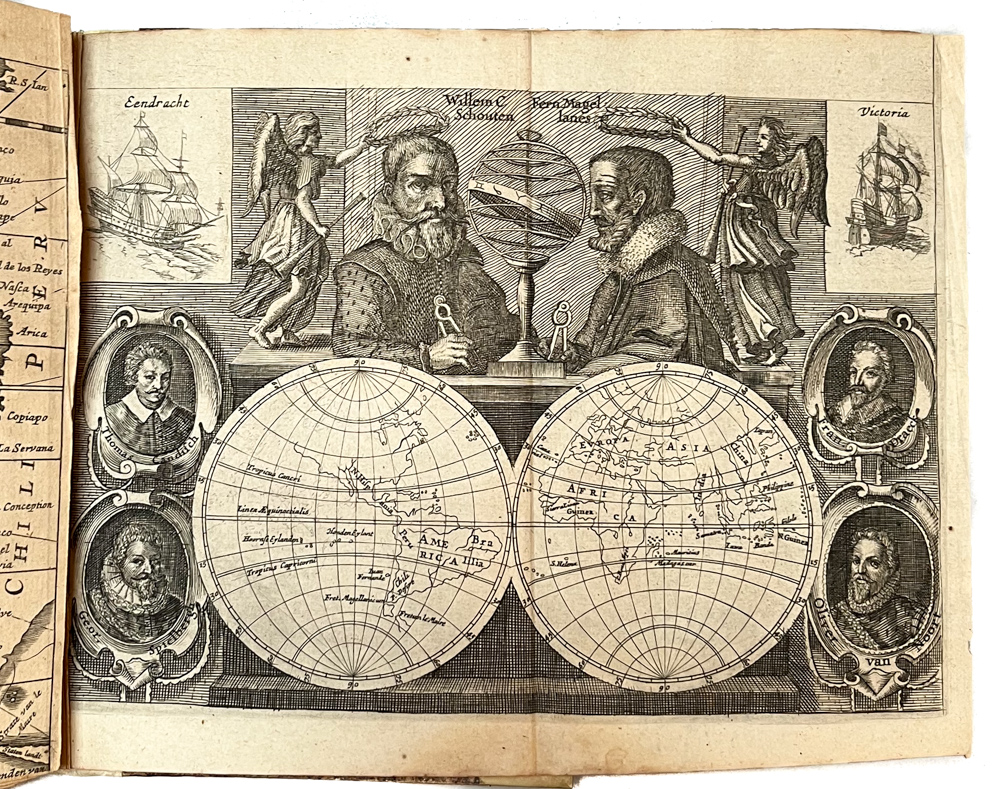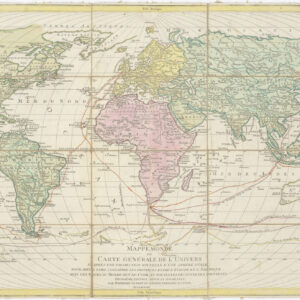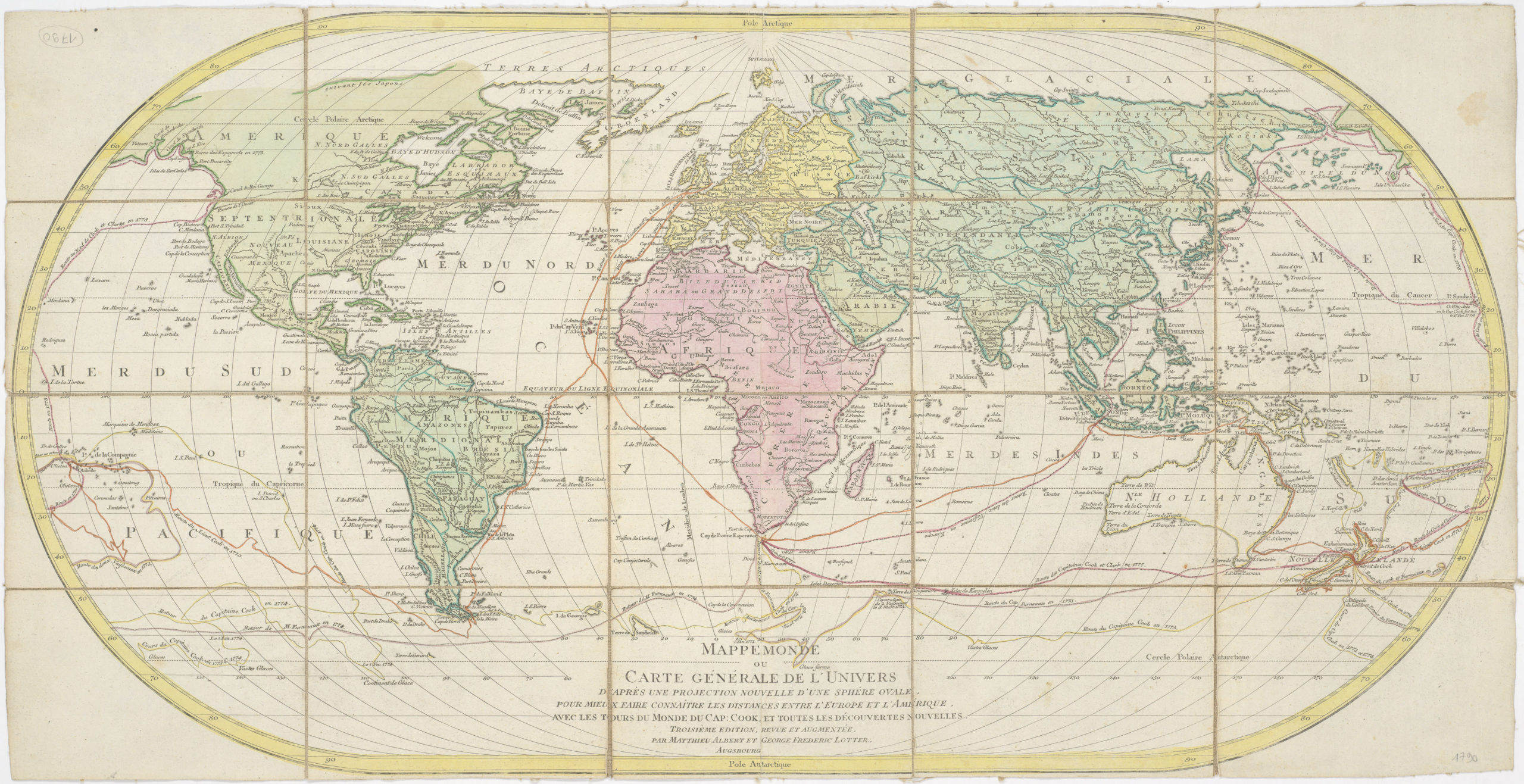Mapping the First United States Manned Orbital Flight.
Official Record. The First United States Manned Orbital Flight.
$675
1 in stock
Description
A cartographic commemoration celebrating one of the earliest successes in American space exploration: Astronaut John Glenn’s first orbital flight in the Friendship 7 space capsule.
This large color map entitled “Official Record of the First United States Manned Orbital Flight” was a special issue of Rand McNally’s Cosmopolitan World map. It was produced by Space Travels Inc. for the 1962 Seattle World’s Fair to commemorate the first manned space flight launched by the United States. Earlier that year, on February 20th, astronaut John H. Glenn orbited the Earth three times aboard the Friendship 7 as part of the pioneering Mercury-Atlas 6 mission.
The trajectory taken by the capsule has been overprinted onto this standardized issue from Rand McNally, which employs a global projection with the Americas at the center of the composition. The most dominant and important of these additions is unquestionably the actual orbital paths taken by Glenn. The legend in the lower right corner of the map explains the meaning of the many symbols used to portray these trajectories. Numbered pictographs of the capsule are worth noting, including on all three courses to distinguish each orbit.
Along the way, circles indicate radar ranges, and at the end of the third orbit, we are shown the location of Glenn’s landing in the outer Caribbean, not to mention provided with the exact coordinates and time of his landing. In line with the scientific nature of the mission and the technical predilections of those particularly interested in it, each of the trajectories is equipped with numbered points to indicate tracking stations or support landing points along the way. A list in the lower-left corner of the map identifies such locations on the map.
The map designers have included a range of images related to the mission. In the upper left half, we see the image of the heroic captain, John Herschel Glenn Jr. Below his photo portrait and name, we are provided with a series of pertinent facts and characteristics of the flight. We have the name of the mission and craft, the date of execution, and a short description of the accomplishment: THREE ORBITS FOR A TOTAL DISTANCE OF 83,450 MILES (134,300KM). Below this, we are informed of the mission’s total duration (4 hours, 55 minutes, 1 second) and that it was completed at an average orbital speed of 17,400 MPH (corresponding to 7.78 KPS or seven times the speed of a rifle bullet).
The impressive stats associated with Glenn are mirrored in the upper right side of the map with slightly smaller depictions of the two astronauts who went before him. Alan Shepard and Virgil Grissom were the first and second spacemen to complete sub-orbital flights – in May and July of 1961, respectively. Wedged between Glenn and Shepard is the upper half of the rocket that launched Glenn into space, along with the exact lift-off time (9:47:39 AM EST). In the lower half of the map, just above the Rand McNally map cartouche, additional images of the mission stand out on the colorful background. These include a depiction of the orbital capsule and its interior and a close-up of the instrument panel used to operate it.
This stunning map is truly a product of its time. It is the ultimate intersection of cartography and space exploration and a sought-after item in a range of different collectors’ circles.
Cartographer(s):
In 1856, William H. Rand opened a printing shop in Chicago and two years later hired a newly arrived Irish immigrant, Andrew McNally, to work in his shop. In 1868, the two men, along with Rand’s nephew George Amos Poole, established Rand McNally & Co. and bought the Tribune’s printing business. The company initially focused on printing tickets and timetables for Chicago’s booming railroad industry, and the following year supplemented that business by publishing complete railroad guides.
The first Rand McNally map, created using a new cost-saving wax engraving method, appeared in the December 1872 edition of its Railroad Guide. Rand McNally became an incorporated business in 1873; with Rand as its president, McNally as vice president, and George Poole as treasurer.
Rand McNally published its first road map, the New Automobile Road Map of New York City & Vicinity, in 1904.
Condition Description
Discoloration and wear along folds and discoloration of one panel especially.
References

